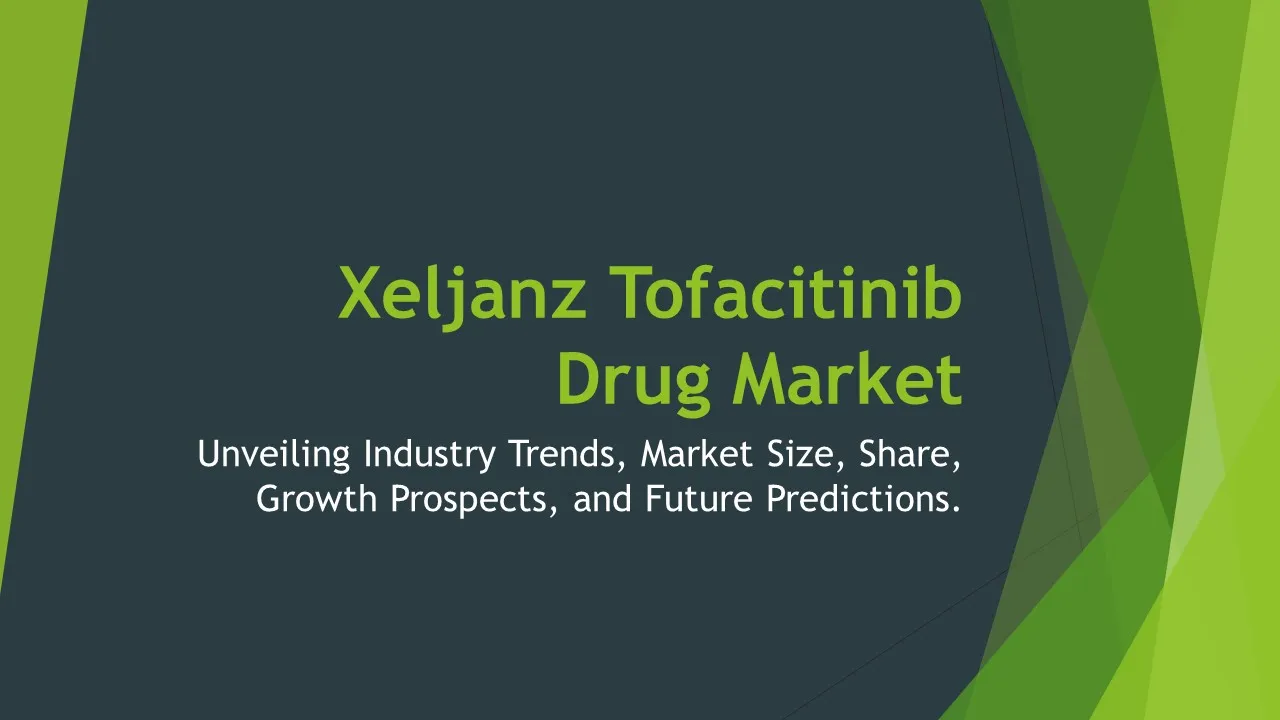Antibody Fragments Sales
Antibody Fragments Market Segments - by Product Type (F(ab')2 Fragments, Fab Fragments, Fv Fragments, Single-Chain Variable Fragments, Nanobodies), Application (Therapeutics, Diagnostics, Research), Distribution Channel (Hospitals, Clinics, Research Institutes, Online Platforms), Target Antigen Type (CD20, HER2, EGFR, PD-1, CTLA-4), and Region (North America, Europe, Asia Pacific, Latin America, Middle East & Africa) - Global Industry Analysis, Growth, Share, Size, Trends, and Forecast 2025-2035
- Report Preview
- Table Of Content
- Segments
- Methodology
Antibody Fragments Sales Market Outlook
The global antibody fragments market is projected to reach approximately USD 5.6 billion by 2035, with a robust compound annual growth rate (CAGR) of around 10.2% during the forecast period from 2025 to 2035. The key drivers for this growth include the increasing prevalence of chronic diseases, rising investments in biopharmaceutical research and development, and the growing demand for personalized medicine. Additionally, advancements in antibody fragment technology, including the development of smaller and more stable fragments, are playing a pivotal role in expanding their applications across various therapeutic areas. As healthcare systems increasingly adopt more effective and targeted therapies, the antibody fragments market is poised for exponential growth, supported by ongoing innovations and collaborations between research institutes and pharmaceutical companies.
Growth Factor of the Market
One of the primary growth factors driving the antibody fragments market is the increasing focus on targeted therapy. Antibody fragments, with their ability to specifically bind to antigens, provide a more refined approach to treating diseases, particularly cancers, where standard therapies may not be as effective. Moreover, the rise in chronic illnesses, such as cancer and autoimmune disorders, has spurred the need for more effective treatment options, which antibody fragments can offer. The ongoing research and development efforts in the pharmaceutical industry focused on enhancing the efficacy and safety profile of these fragments further bolster market growth. Regulatory approvals for novel antibody fragment therapies have also encouraged manufacturers to invest in this segment. Finally, the growing trend toward personalized medicine is expected to enhance the uptake of antibody fragments, providing tailored therapies that align with individual patient needs, thereby propelling the market forward.
Key Highlights of the Market
- The market is projected to reach USD 5.6 billion by 2035.
- A CAGR of 10.2% is anticipated from 2025 to 2035.
- Increased focus on targeted therapies drives market growth.
- Rising prevalence of chronic diseases adds to demand.
- Innovation in antibody fragment technologies enhances applications.
By Product Type
F(ab')2 Fragments:
F(ab')2 fragments are a significant segment within the antibody fragments market due to their ability to retain effective binding capabilities while being smaller than whole antibodies. These fragments are formed by pepsin digestion of immunoglobulin G (IgG), resulting in a bivalent structure that can effectively engage multiple epitopes at once. Their smaller size compared to whole antibodies allows for better tissue penetration and reduced immunogenicity, making them suitable for therapeutic applications, especially in oncology. As a result, F(ab')2 fragments are increasingly utilized in the development of targeted therapies, contributing significantly to the overall growth of the market.
Fab Fragments:
Fab fragments represent another critical product type within the antibody fragments market. These fragments consist of one constant and one variable domain from each of the heavy and light chains of antibodies, effectively retaining the antigen-binding site. Fab fragments are gaining traction due to their ability to modulate immune responses and serve as targeted drug delivery vehicles. Their smaller size facilitates better bioavailability and the ability to penetrate tissues more effectively than traditional antibodies. Research into their application in targeted therapies, especially in treating cancer and autoimmune diseases, is expanding, showcasing their potential for growth in the market.
Fv Fragments:
The Fv fragments are the smallest functional antibody fragments that consist of the variable regions of heavy and light chains. Their unique structure enables them to bind specifically to antigens, making them exceptionally useful in therapeutic applications. With their small size, Fv fragments can penetrate tissues and solid tumors more efficiently than larger antibody constructs, providing a significant advantage in targeting cancer cells. Additionally, they can be engineered for improved binding affinity and stability, further enhancing their therapeutic potential. This versatility and effectiveness are driving their adoption within the healthcare industry, leading to increased demand in the antibody fragments market.
Single-Chain Variable Fragments:
Single-chain variable fragments (scFvs) are a remarkable class of antibody fragments that link the variable regions of heavy and light chains through a flexible peptide linker, creating a single polypeptide chain. This structure allows for a compact design, making scFvs highly amenable to engineering for enhanced stability and binding properties. scFvs are particularly valuable in therapeutic applications due to their ability to undergo modifications that improve their pharmacokinetic profiles. Their unique characteristics have propelled their use in various applications, including diagnostics and targeted therapies, contributing significantly to the growth of the antibody fragments market.
Nanobodies:
Nanobodies, or VHH domains, are derived from camelid antibodies and represent a novel class of antibody fragments known for their small size and unique structure. Their compact nature enables high tissue penetration and binding to challenging targets, including hidden epitopes on antigens. Nanobodies exhibit remarkable stability and solubility, making them suitable for therapeutic applications in difficult-to-treat diseases. Their potential in various fields such as cancer therapy, imaging, and diagnostics is driving significant research and development efforts, thus emerging as a crucial product type within the antibody fragments market.
By Application
Therapeutics:
The therapeutic application of antibody fragments is one of the largest segments in the market. These fragments are utilized to target specific disease pathways, particularly in oncology, where precise targeting can increase treatment efficacy while minimizing side effects. Antibody fragments can be designed for various therapeutic purposes, such as inhibiting the growth of cancer cells or modulating immune responses, making them versatile tools in modern medicine. The growing acceptance of targeted therapies is driving demand in this sector, as healthcare providers increasingly seek more effective and safer treatment options for patients.
Diagnostics:
Antibody fragments also find significant application in diagnostics, where they are used in various immunoassays to detect specific biomarkers associated with diseases. The precision and specificity of antibody fragments enhance the accuracy of diagnostic tests, making them essential in clinical settings. Their small size allows for better binding and detection in assays, increasing the sensitivity of diagnostic tests. As the need for accurate and rapid diagnostics grows globally, the antibody fragments market is expected to see substantial growth in this application area, driven by advancements in technologies and increasing investments in research.
Research:
Research applications of antibody fragments encompass a wide range of studies, including basic biological research, drug discovery, and innovative therapeutic strategies. Scientists utilize these fragments to investigate protein interactions, signaling pathways, and cellular functions due to their high specificity and binding capabilities. The growing demand for innovative research tools is driving investments into antibody fragment technologies, leading to the development of new fragment-based assays and screening methods. As research in biotechnology and pharmaceuticals continues to expand, the segment focusing on antibody fragments for research purposes is projected to experience significant growth.
By Distribution Channel
Hospitals:
Hospitals represent a substantial distribution channel for antibody fragments, as they are primary institutions administering advanced therapies to patients. The increasing prevalence of chronic diseases and the need for personalized medicine drive the demand for innovative therapeutic solutions within hospitals. Many hospitals are collaborating with biopharmaceutical companies to facilitate the acquisition and utilization of antibody fragments in clinical settings, thereby enhancing patient care and treatment outcomes. The growing investment in healthcare infrastructure is further expected to bolster this distribution channel, leading to increased market growth.
Clinics:
Clinics, including specialty and outpatient centers, serve as essential distribution channels for antibody fragments, particularly in therapeutic and diagnostic applications. These facilities are increasingly implementing advanced treatment protocols that incorporate antibody fragments to target specific diseases. The rise in the number of outpatient procedures and the emphasis on preventative healthcare are motivating clinics to adopt innovative therapies, leading to a higher uptake of antibody fragments. Additionally, clinics are often at the forefront of clinical trials, contributing to the growth of this distribution channel.
Research Institutes:
Research institutes play a critical role in the distribution of antibody fragments, primarily through their involvement in research, development, and innovation. These institutions often collaborate with biotechnology firms and pharmaceutical companies to advance the use of antibody fragments in various applications. The demand for cutting-edge research tools and reagents from these institutes continues to grow, driving market expansion. Moreover, research institutes often facilitate the development of new therapeutic entities and diagnostics, aiding in the commercial distribution of antibody fragments to a broader audience.
Online Platforms:
Online platforms have emerged as an increasingly popular distribution channel for antibody fragments, providing researchers and healthcare providers with easy access to these products. The convenience and accessibility of online ordering enable customers to procure antibody fragments from various suppliers worldwide. Furthermore, the rise of e-commerce in the healthcare sector allows for competitive pricing and broadens the market reach for manufacturers. As online platforms continue to thrive, they are expected to play a vital role in the distribution of antibody fragments, enhancing overall market growth.
By Target Antigen Type
CD20:
The CD20 antigen is a prevalent target in the treatment of B-cell malignancies, such as non-Hodgkin lymphoma and chronic lymphocytic leukemia. Antibody fragments targeting CD20 have shown promising therapeutic efficacy and are being utilized in several treatment regimens. Their ability to specifically bind to CD20-positive cells facilitates targeted destruction of malignant B-cells, thus improving treatment outcomes. The growing number of CD20-targeting therapies in clinical development is expected to drive demand for antibody fragments in this category, contributing to overall market growth.
HER2:
HER2 (Human Epidermal Growth Factor Receptor 2) is another crucial target in oncology, especially in breast cancer therapy. Antibody fragments targeting HER2 have gained traction due to their effectiveness in treating HER2-positive tumors. The use of antibody fragments allows for enhanced specificity and reduced side effects compared to full-length antibodies. As advancements in drug development continue to evolve, the demand for HER2-targeting antibody fragments is expected to grow significantly, fueled by the increasing incidence of HER2-positive breast cancer cases globally.
EGFR:
The Epidermal Growth Factor Receptor (EGFR) is often overexpressed in various tumors, making it an attractive target for antibody fragments. EGFR-targeting fragments have demonstrated considerable potential in both therapeutic and diagnostic applications. Their ability to bind effectively to EGFR enables targeted therapy and monitoring of tumor progression. As more research is conducted into EGFR-targeting strategies, the market for antibody fragments aimed at this antigen type is expected to expand, driven by increasing awareness of personalized medicine.
PD-1:
The Programmed cell death protein 1 (PD-1) pathway has emerged as a vital target in immunotherapy, particularly in cancer treatment. Antibody fragments targeting PD-1 can enhance T-cell activation and promote an immune response against tumors. This potential has led to significant investment in the development of PD-1-targeting antibody fragments. As immunotherapy continues to gain recognition as a potent treatment modality, the demand for PD-1-targeting antibody fragments is anticipated to rise, contributing positively to the market.
CTLA-4:
CTLA-4 (Cytotoxic T-Lymphocyte-Associated Protein 4) is another prominent target in cancer immunotherapy. Antibody fragments that inhibit the CTLA-4 pathway can enhance T-cell activation and improve the immune response to tumors. The success of CTLA-4-targeting therapies in clinical settings has bolstered research and development efforts in this area. As the oncology landscape increasingly shifts toward immunotherapeutic approaches, the growth of antibody fragments targeting CTLA-4 is expected to escalate, reflecting broader market trends.
By Region
Regionally, North America dominates the antibody fragments market, accounting for over 40% of the global market share due to advanced healthcare infrastructure, high levels of research and development spending, and a strong presence of biotechnology and pharmaceutical companies. The United States, in particular, has a robust market for antibody fragments, supported by a high prevalence of chronic diseases and a growing demand for targeted therapies. The North American market is projected to grow at a CAGR of 10.5% from 2025 to 2035, driven by continuous innovation and increasing investments in biopharmaceutical research.
Europe follows North America in terms of market share, capturing approximately 30% of the global antibody fragments market. The European region benefits from strong regulatory frameworks supporting biopharmaceutical innovation and a growing emphasis on personalized medicine. Key countries like Germany, France, and the United Kingdom are leading contributors, showcasing significant investments in biotechnology research and development. The European market is expected to grow at a CAGR of 9.8% during the forecast period, driven by increasing collaborations between academic institutions and industry players.
Opportunities
The antibody fragments market presents numerous opportunities for growth driven by advancements in biopharmaceuticals and increased investment in research and development. One major opportunity lies in the rising demand for personalized medicine, where antibody fragments can be tailored to target specific patient profiles, thereby improving treatment outcomes. As healthcare providers increasingly seek precision-targeted therapies, the development of novel antibody fragments designed to bind to unique tumor markers offers a promising avenue for market expansion. Additionally, the growing prevalence of chronic diseases such as cancer, autoimmune disorders, and infectious diseases continues to drive demand for innovative therapeutic solutions, creating vast opportunities for manufacturers in the antibody fragments space.
Furthermore, the emergence of novel drug delivery systems utilizing antibody fragments represents another lucrative opportunity. The development of smart drug delivery mechanisms that enhance the efficacy of antibody fragments while minimizing side effects could revolutionize treatment protocols in oncology and other therapeutic areas. The ability to create multifunctional antibody fragments that can target specific cells while carrying therapeutic agents is a transformative approach that can open new frontiers for application in both diagnostics and therapeutics. As researchers and pharmaceutical companies continue to explore these innovative avenues, the antibody fragments market is likely to experience substantial growth in the coming years.
Threats
Despite the promising growth prospects, the antibody fragments market faces several threats that could hinder its overall expansion. One significant concern is the potential for market saturation as an increasing number of companies enter the space, leading to heightened competition. This influx of players may result in price wars and reduced profit margins, making it challenging for smaller firms to maintain their market positions. Additionally, stringent regulatory frameworks governing the approval and commercialization of biopharmaceutical products pose a significant threat, as lengthy approval processes can delay market entry for new antibody fragment therapies. Furthermore, the dynamic nature of the healthcare industry, influenced by changing regulations and market trends, may create uncertainties that impact investment and research initiatives.
Another threat facing the antibody fragments market is the rapid pace of technological advancements in alternative therapies, such as CAR T-cell therapy and other immunotherapies, which could overshadow traditional therapies utilizing antibody fragments. As healthcare providers increasingly adopt these innovative approaches, there may be a shift in focus away from antibody fragments, potentially stunting their growth. Additionally, the rising costs associated with research, development, and production of antibody fragment therapies may deter investment and limit the feasibility of these products, thereby posing a challenge to the market’s long-term sustainability.
Competitor Outlook
- Abcam PLC
- Thermo Fisher Scientific Inc.
- Roche Holding AG
- Novartis AG
- Amgen Inc.
- Genentech, Inc.
- Sangamo Therapeutics, Inc.
- Adimab LLC
- Ablynx NV
- MedImmune LLC
- Reynolds Pharmaceuticals
- Innate Pharma S.A.
- Merck KGaA
- Pfizer Inc.
- Biogen Inc.
The competitive landscape of the antibody fragments market is characterized by a combination of established pharmaceutical giants and innovative biotechnology firms. Key players are focusing on strategic collaborations, mergers, and acquisitions to bolster their market positions and expand their product offerings. Companies are increasingly investing in research and development to create advanced antibody fragment technologies that address the growing demand for targeted therapies in various therapeutic areas. The emphasis on innovation and technological advancement is driving competition, pushing companies to differentiate their products and enhance their therapeutic efficacy.
Abcam PLC and Thermo Fisher Scientific Inc. are notable players in the market, known for their extensive portfolios of antibody fragments and related research products. Both companies leverage their established distribution networks and brand reputations to capture a significant market share. Abcam, in particular, focuses on providing high-quality, validated antibody fragments for both research and therapeutic applications, while Thermo Fisher is known for its integrated laboratory solutions that cater to a diverse range of scientific needs. Their continued investments in technology and customer service set them apart in this competitive landscape.
On the other hand, companies like Amgen Inc. and Genentech, Inc. are heavily involved in the therapeutic application of antibody fragments. Amgen has successfully developed several antibody fragment-based therapies, focusing on oncology and other chronic diseases, while Genentech's pioneering work in monoclonal antibodies extends to effective antibody fragment applications. Both companies are using their expertise to drive innovation and improve patient outcomes, solidifying their positions as leaders in the antibody fragments market. Their commitment to advancing biopharmaceutical research showcases their significant role in shaping the future of targeted therapies.
1 Appendix
- 1.1 List of Tables
- 1.2 List of Figures
2 Introduction
- 2.1 Market Definition
- 2.2 Scope of the Report
- 2.3 Study Assumptions
- 2.4 Base Currency & Forecast Periods
3 Market Dynamics
- 3.1 Market Growth Factors
- 3.2 Economic & Global Events
- 3.3 Innovation Trends
- 3.4 Supply Chain Analysis
4 Consumer Behavior
- 4.1 Market Trends
- 4.2 Pricing Analysis
- 4.3 Buyer Insights
5 Key Player Profiles
- 5.1 Abcam PLC
- 5.1.1 Business Overview
- 5.1.2 Products & Services
- 5.1.3 Financials
- 5.1.4 Recent Developments
- 5.1.5 SWOT Analysis
- 5.2 Ablynx NV
- 5.2.1 Business Overview
- 5.2.2 Products & Services
- 5.2.3 Financials
- 5.2.4 Recent Developments
- 5.2.5 SWOT Analysis
- 5.3 Adimab LLC
- 5.3.1 Business Overview
- 5.3.2 Products & Services
- 5.3.3 Financials
- 5.3.4 Recent Developments
- 5.3.5 SWOT Analysis
- 5.4 Amgen Inc.
- 5.4.1 Business Overview
- 5.4.2 Products & Services
- 5.4.3 Financials
- 5.4.4 Recent Developments
- 5.4.5 SWOT Analysis
- 5.5 Merck KGaA
- 5.5.1 Business Overview
- 5.5.2 Products & Services
- 5.5.3 Financials
- 5.5.4 Recent Developments
- 5.5.5 SWOT Analysis
- 5.6 Biogen Inc.
- 5.6.1 Business Overview
- 5.6.2 Products & Services
- 5.6.3 Financials
- 5.6.4 Recent Developments
- 5.6.5 SWOT Analysis
- 5.7 Novartis AG
- 5.7.1 Business Overview
- 5.7.2 Products & Services
- 5.7.3 Financials
- 5.7.4 Recent Developments
- 5.7.5 SWOT Analysis
- 5.8 Pfizer Inc.
- 5.8.1 Business Overview
- 5.8.2 Products & Services
- 5.8.3 Financials
- 5.8.4 Recent Developments
- 5.8.5 SWOT Analysis
- 5.9 MedImmune LLC
- 5.9.1 Business Overview
- 5.9.2 Products & Services
- 5.9.3 Financials
- 5.9.4 Recent Developments
- 5.9.5 SWOT Analysis
- 5.10 Genentech, Inc.
- 5.10.1 Business Overview
- 5.10.2 Products & Services
- 5.10.3 Financials
- 5.10.4 Recent Developments
- 5.10.5 SWOT Analysis
- 5.11 Roche Holding AG
- 5.11.1 Business Overview
- 5.11.2 Products & Services
- 5.11.3 Financials
- 5.11.4 Recent Developments
- 5.11.5 SWOT Analysis
- 5.12 Innate Pharma S.A.
- 5.12.1 Business Overview
- 5.12.2 Products & Services
- 5.12.3 Financials
- 5.12.4 Recent Developments
- 5.12.5 SWOT Analysis
- 5.13 Reynolds Pharmaceuticals
- 5.13.1 Business Overview
- 5.13.2 Products & Services
- 5.13.3 Financials
- 5.13.4 Recent Developments
- 5.13.5 SWOT Analysis
- 5.14 Sangamo Therapeutics, Inc.
- 5.14.1 Business Overview
- 5.14.2 Products & Services
- 5.14.3 Financials
- 5.14.4 Recent Developments
- 5.14.5 SWOT Analysis
- 5.15 Thermo Fisher Scientific Inc.
- 5.15.1 Business Overview
- 5.15.2 Products & Services
- 5.15.3 Financials
- 5.15.4 Recent Developments
- 5.15.5 SWOT Analysis
- 5.1 Abcam PLC
6 Market Segmentation
- 6.1 Antibody Fragments Sales Market, By Application
- 6.1.1 Therapeutics
- 6.1.2 Diagnostics
- 6.1.3 Research
- 6.2 Antibody Fragments Sales Market, By Product Type
- 6.2.1 F(ab')2 Fragments
- 6.2.2 Fab Fragments
- 6.2.3 Fv Fragments
- 6.2.4 Single-Chain Variable Fragments
- 6.2.5 Nanobodies
- 6.3 Antibody Fragments Sales Market, By Target Antigen Type
- 6.3.1 CD20
- 6.3.2 HER2
- 6.3.3 EGFR
- 6.3.4 PD-1
- 6.3.5 CTLA-4
- 6.4 Antibody Fragments Sales Market, By Distribution Channel
- 6.4.1 Hospitals
- 6.4.2 Clinics
- 6.4.3 Research Institutes
- 6.4.4 Online Platforms
- 6.1 Antibody Fragments Sales Market, By Application
7 Competitive Analysis
- 7.1 Key Player Comparison
- 7.2 Market Share Analysis
- 7.3 Investment Trends
- 7.4 SWOT Analysis
8 Research Methodology
- 8.1 Analysis Design
- 8.2 Research Phases
- 8.3 Study Timeline
9 Future Market Outlook
- 9.1 Growth Forecast
- 9.2 Market Evolution
10 Geographical Overview
- 10.1 Europe - Market Analysis
- 10.1.1 By Country
- 10.1.1.1 UK
- 10.1.1.2 France
- 10.1.1.3 Germany
- 10.1.1.4 Spain
- 10.1.1.5 Italy
- 10.1.1 By Country
- 10.2 Asia Pacific - Market Analysis
- 10.2.1 By Country
- 10.2.1.1 India
- 10.2.1.2 China
- 10.2.1.3 Japan
- 10.2.1.4 South Korea
- 10.2.1 By Country
- 10.3 Latin America - Market Analysis
- 10.3.1 By Country
- 10.3.1.1 Brazil
- 10.3.1.2 Argentina
- 10.3.1.3 Mexico
- 10.3.1 By Country
- 10.4 North America - Market Analysis
- 10.4.1 By Country
- 10.4.1.1 USA
- 10.4.1.2 Canada
- 10.4.1 By Country
- 10.5 Middle East & Africa - Market Analysis
- 10.5.1 By Country
- 10.5.1.1 Middle East
- 10.5.1.2 Africa
- 10.5.1 By Country
- 10.6 Antibody Fragments Sales Market by Region
- 10.1 Europe - Market Analysis
11 Global Economic Factors
- 11.1 Inflation Impact
- 11.2 Trade Policies
12 Technology & Innovation
- 12.1 Emerging Technologies
- 12.2 AI & Digital Trends
- 12.3 Patent Research
13 Investment & Market Growth
- 13.1 Funding Trends
- 13.2 Future Market Projections
14 Market Overview & Key Insights
- 14.1 Executive Summary
- 14.2 Key Trends
- 14.3 Market Challenges
- 14.4 Regulatory Landscape
Segments Analyzed in the Report
The global Antibody Fragments Sales market is categorized based on
By Product Type
- F(ab')2 Fragments
- Fab Fragments
- Fv Fragments
- Single-Chain Variable Fragments
- Nanobodies
By Application
- Therapeutics
- Diagnostics
- Research
By Distribution Channel
- Hospitals
- Clinics
- Research Institutes
- Online Platforms
By Target Antigen Type
- CD20
- HER2
- EGFR
- PD-1
- CTLA-4
By Region
- North America
- Europe
- Asia Pacific
- Latin America
- Middle East & Africa
Key Players
- Abcam PLC
- Thermo Fisher Scientific Inc.
- Roche Holding AG
- Novartis AG
- Amgen Inc.
- Genentech, Inc.
- Sangamo Therapeutics, Inc.
- Adimab LLC
- Ablynx NV
- MedImmune LLC
- Reynolds Pharmaceuticals
- Innate Pharma S.A.
- Merck KGaA
- Pfizer Inc.
- Biogen Inc.
- Publish Date : Jan 21 ,2025
- Report ID : PH-66631
- No. Of Pages : 100
- Format : |
- Ratings : 4.5 (110 Reviews)









